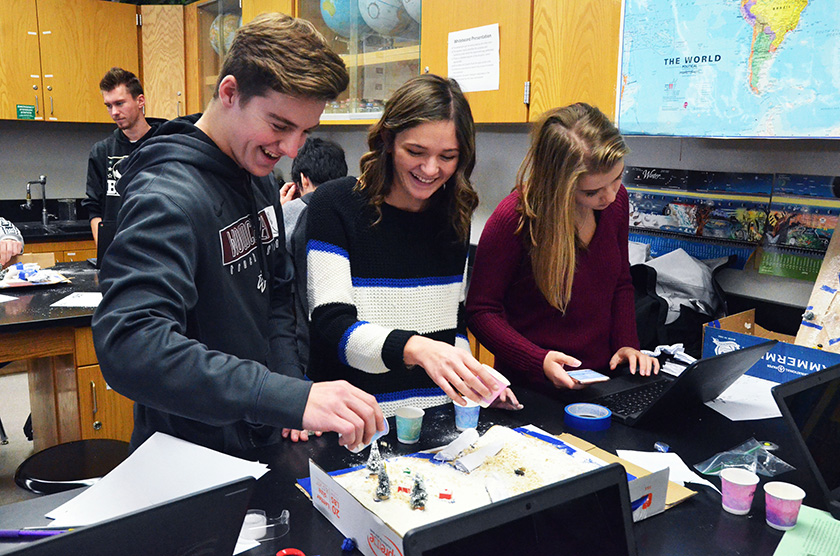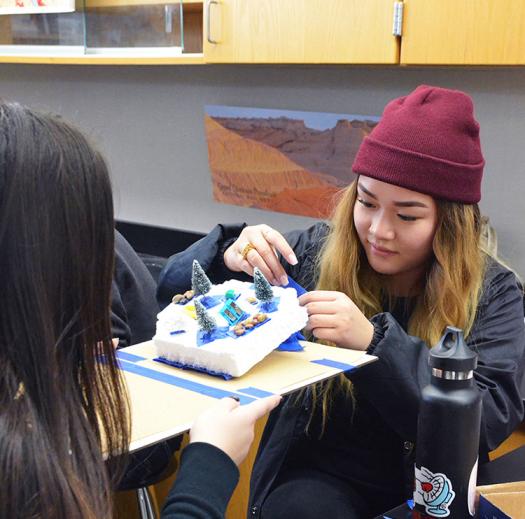Science News Learning, STEM Outreach
Making science real for students with Science News in High Schools

Like many science teachers, Natasha Schaefer doesn’t like teaching out of a textbook. She knows her students will receive more valuable information with current scientific news. That’s what makes Science News in High Schools so valuable to teachers like Natasha, a teacher at Woodcreek High School in Calfornia, and Chrissy O’Malley, a teacher at Carroll High School in Dayton, Ohio.
Science News works to increase science literacy by turning advanced research articles into easily understood information, appropriate for high schools students and adults alike.
Science News in High Schools brings the award-winning Science News magazine to schools across the United States and around the world, reaching approximately four million high school students. Below, Chrissy and Natasha share their experience using the program, which provides 10 print copies of each issue of Science News, digital access to sciencenews.org, an online Educator Guide, and access to an online community of other Science News for High Schools participants.
HOW SCIENCE NEWS IN HIGH SCHOOLS HAS HELPED THEM TEACH SCIENCE IN THEIR CLASSROOM:
Chrissy: Science News in High Schools is used in three classrooms at Carroll High School in the classes that are part of our independent research program — AP Physics, Honors Chemistry, and Honors Biology. Students in these courses used Science News to understand current topics in science research and to stay up-to-date on topics of interest. Students in other science classes also use them to report on current events in science.
Science News shows kids the dynamics of science, the ongoing processes, and disagreements among scientists.
Natasha: It’s a great help. The articles they choose are really good and recent. I don’t use a textbook because science is so new and textbooks get so old so quickly. This offers good written material that the kids can use immediately. Prior to using Science News in High Schools, I used to copy and print out articles. I would have a ton of magazines. Science News in High Schools pulls out really releavant information and makes lessons a little faster for me. It’s also great that the students can go on the site and see the colored graphics. It’s more modern.

BENEFITS OF THE EDUCATOR GUIDES:
Natasha: The articles that they choose to use for activities come with really great worksheets. The worksheets pull in English and math and are great for sub plans. If I am absent, the kids can read it.
SPECIFIC LESSONS AND ARTICLES THEIR STUDENTS HAVE ENJOYED:
Chrissy: We enjoyed the series of articles last year about CRISPR and genetic engineering. We have a group of students who are participating in a genetics engineering competition this year, and Science News was a huge resource in catching our students up on what are the frontiers of the field.
Help bring Science News in High Schools to more students across the country.
Natasha: The students enjoyed the article “Supercontinent superpuzzle: Geologists trace the comings and goings of Earth’s land masses.” It has a nice timelines and good graphics, and was a good review of plate tectonics. They also enjoyed the “The science of avalanches” and the White Out lab that went along with it because it used recent data and showed the students this is something that is happening now.
HOW STUDENTS HAVE REACTED TO SCIENCE NEWS:
Natasha: The kids are more open to understanding because they realize it is about something that just occurred and someone is doing research on. The articles talk about real people, and show that science isn’t just a whole bunch of facts.
HOW SCIENCE NEWS IN HIGH SCHOOLS HELPS INCREASE SCIENTIFIC LITERACY:
Natasha: Science News shows kids the dynamics of science, the ongoing processes, and disagreements among scientists. It makes it more real and more like a novel, with characters — they just happen to be anthropologists, biologists, and microbiologists.
Learn more about Science News in High Schools.
Chrissy: Science News works to increase science literacy by turning advanced research articles into easily understood information, appropriate for high schools students and adults alike.


